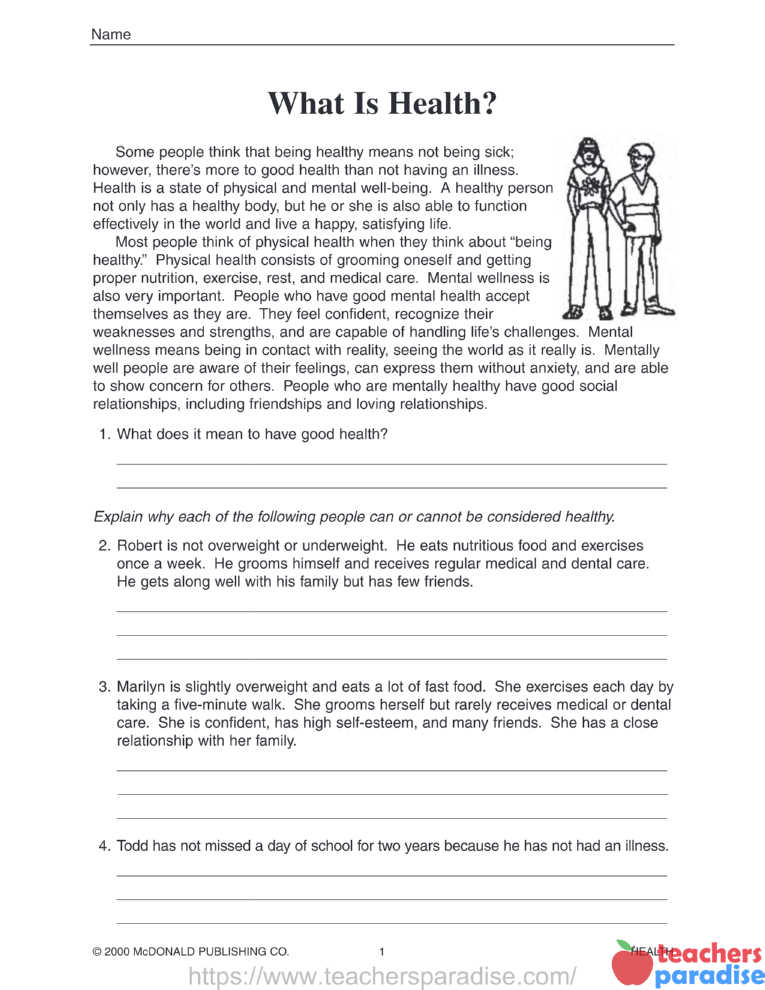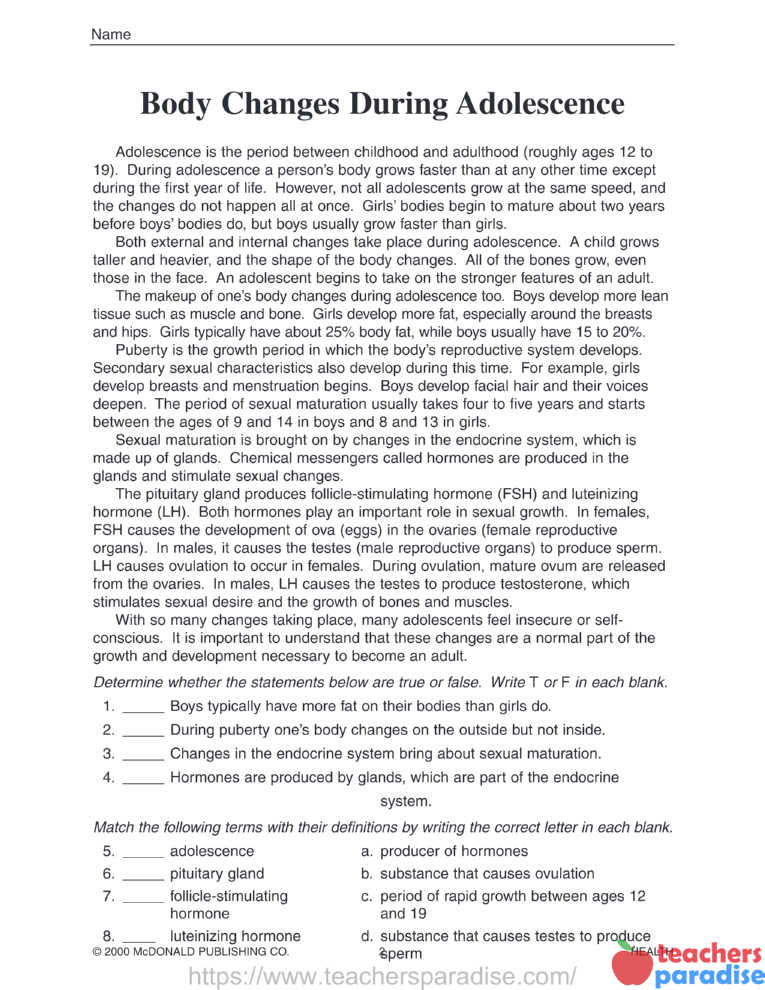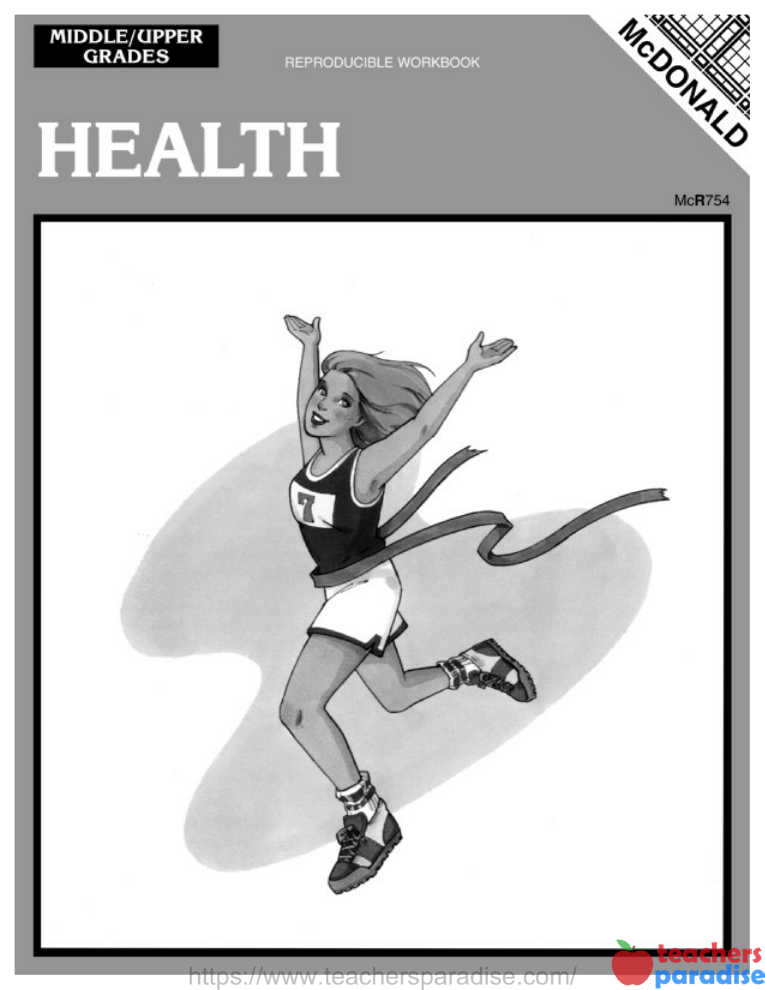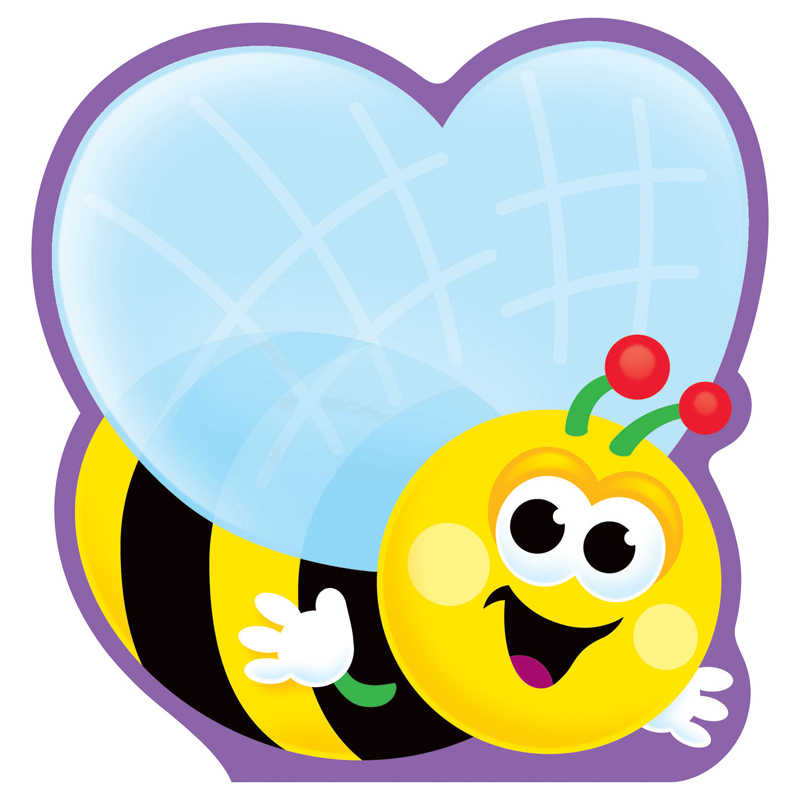Health Reproducible Book
What Is Health?
Some people think that being healthy means not being sick; however, there’s more to good health than not having an illness. Health is a state of physical and mental well-being. A healthy person not only has a healthy body, but he or she is also able to function effectively in the world and live a happy, satisfying life.
Most people think of physical health when they think about “being healthy.” Physical health consists of grooming oneself and getting proper nutrition, exercise, rest, and medical care. Mental wellness is also very important. People who have good mental health accept themselves as they are. They feel confident, recognize their weaknesses and strengths, and are capable of handling life’s challenges. Mental wellness means being in contact with reality, seeing the world as it really is. Mentally well people are aware of their feelings, can express them without anxiety, and are able to show concern for others. People who are mentally healthy have good social relationships, including friendships and loving relationships.
WORKSHEET & Sample PDF Activity
Sample PDF Activity
Body Changes During Adolescence
Adolescence is the period between childhood and adulthood (roughly ages 12 to 19). During adolescence a person’s body grows faster than at any other time except during the first year of life. However, not all adolescents grow at the same speed, and the changes do not happen all at once. Girls’ bodies begin to mature about two years before boys’ bodies do, but boys usually grow faster than girls.

Both external and internal changes take place during adolescence. A child grows taller and heavier, and the shape of the body changes. All of the bones grow, even those in the face. An adolescent begins to take on the stronger features of an adult. The makeup of one’s body changes during adolescence too. Boys develop more lean tissue such as muscle and bone. Girls develop more fat, especially around the breasts and hips. Girls typically have about 25% body fat, while boys usually have 15 to 20%.
Puberty is the growth period in which the body’s reproductive system develops. Secondary sexual characteristics also develop during this time. For example, girls develop breasts and menstruation begins. Boys develop facial hair and their voices deepen. The period of sexual maturation usually takes four to five years and starts between the ages of 9 and 14 in boys and 8 and 13 in girls.
Sexual maturation is brought on by changes in the endocrine system, which is made up of glands. Chemical messengers called hormones are produced in the glands and stimulate sexual changes.

The pituitary gland produces follicle-stimulating hormone (FSH) and luteinizing hormone (LH). Both hormones play an important role in sexual growth. In females, FSH causes the development of ova (eggs) in the ovaries (female reproductive organs). In males, it causes the testes (male reproductive organs) to produce sperm. LH causes ovulation to occur in females. During ovulation, mature ovum are released from the ovaries. In males, LH causes the testes to produce testosterone, which stimulates sexual desire and the growth of bones and muscles.
With so many changes taking place, many adolescents feel insecure or self-conscious. It is important to understand that these changes are a normal part of the growth and development necessary to become an adult.

The activity sheets in this book address important health-related topics for students in grades 6 through 9. Each page clearly presents health information and then tests students’ understanding of the facts with questions and/or activities. Page 28 serves as a comprehensive review of the information presented throughout the book. These pages may be used to supplement your current classroom science program or as an independent science unit on health.
Table of Contents
1 What Is Health?
2 Body Changes During Adolescence
3 Heredity
4 Sexual Reproduction
5 Pregnancy and Childbirth
6 Sexually Transmitted Diseases
7 Routine Health Care
8 Infectious Diseases
9 Noninfectious Diseases
10 Nutrition
11 The Food Guide Pyramid
12 Reading Food Labels
13 Foods That May Protect Against Disease
14 Eating Disorders
15 Exercise
16 Safety
17 Risky Behavior
18 Alcohol Abuse
19 Tobacco Use
20 Drugs
21 Abuse of Legal Substances
22 Abuse of Illegal Drugs
23 Responsible Decision Making
24 Conflict Resolution
25 Stress and Stress Management
26 Healthy Communication
27 Family Life
28 Health Review
























